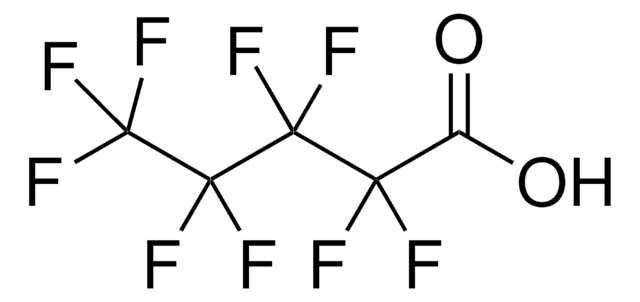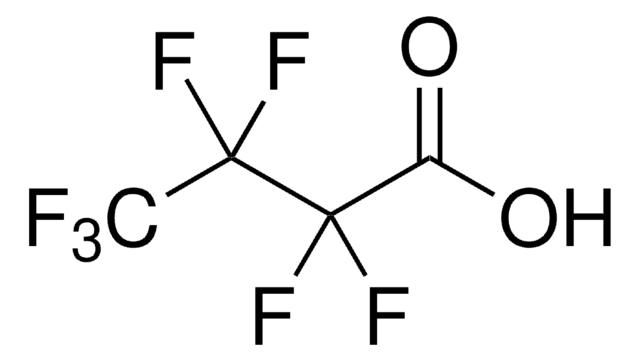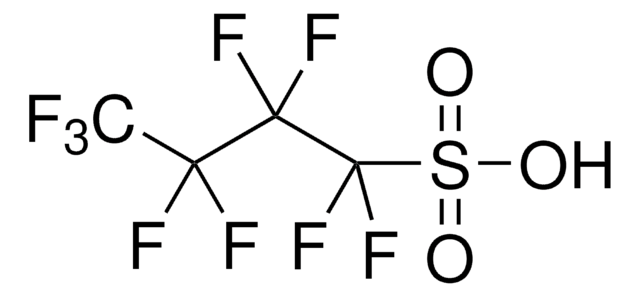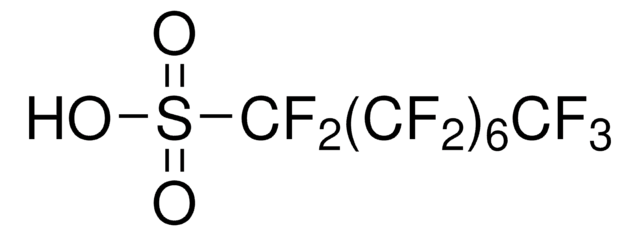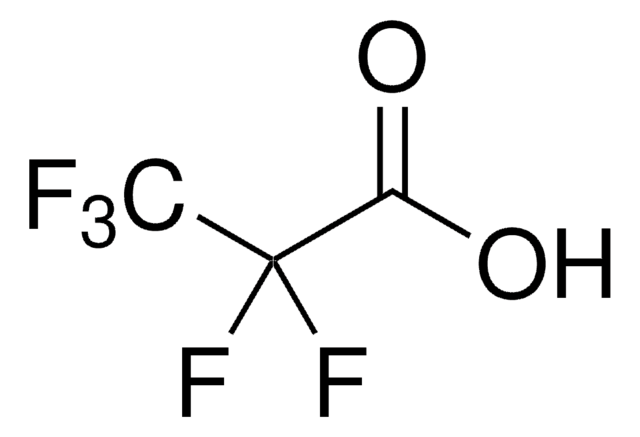342041
Perfluoroheptanoic acid
≥97.0%
Sinónimos:
Tridecafluoroheptanoic acid, Perfluoroheptanoic acid
About This Item
Productos recomendados
Quality Level
assay
≥97.0%
form
solid
refractive index
n20/D 1.306 (lit.)
bp
175 °C/742 mmHg (lit.)
mp
30 °C (lit.)
density
1.792 g/mL at 25 °C (lit.)
SMILES string
OC(=O)C(F)(F)C(F)(F)C(F)(F)C(F)(F)C(F)(F)C(F)(F)F
InChI
1S/C7HF13O2/c8-2(9,1(21)22)3(10,11)4(12,13)5(14,15)6(16,17)7(18,19)20/h(H,21,22)
InChI key
ZWBAMYVPMDSJGQ-UHFFFAOYSA-N
¿Está buscando productos similares? Visita Guía de comparación de productos
Application
- For the fluoroalkylation of C-H bonds of aromatic compounds using Ni/SiO2 nanocatalyst.
- To synthesize biphenylyl benzoates via Mitsunobu reaction.
- To synthesize N-perfluoracyl β-thioamides from β-thio amines in the presence of methyl chloroformate.
signalword
Danger
hcodes
Hazard Classifications
Repr. 1B - STOT RE 1
target_organs
Liver
Storage Class
6.1C - Combustible acute toxic Cat.3 / toxic compounds or compounds which causing chronic effects
wgk_germany
WGK 3
flash_point_f
Not applicable
flash_point_c
Not applicable
ppe
Eyeshields, Faceshields, Gloves, type P3 (EN 143) respirator cartridges
Elija entre una de las versiones más recientes:
¿Ya tiene este producto?
Encuentre la documentación para los productos que ha comprado recientemente en la Biblioteca de documentos.
Los clientes también vieron
Nuestro equipo de científicos tiene experiencia en todas las áreas de investigación: Ciencias de la vida, Ciencia de los materiales, Síntesis química, Cromatografía, Analítica y muchas otras.
Póngase en contacto con el Servicio técnico

